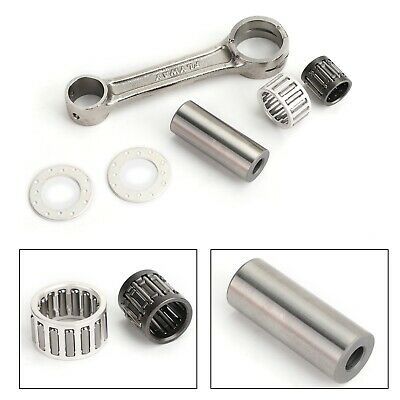2 Stroke Engine Connecting Rod

A description of the 2 stroke crosshead diesel engine connecting rod construction details materials and how oil is supplied to the bottom end bearing.
2 stroke engine connecting rod. The crankshaft in a two stroke engine rotates moving the piston by means of the connecting rod. This type of piston is widely used in car diesel engines. Unlike the steam engine there is no piston rod or crosshead except big two stroke engines. The rod ratio in this engine would be 5 7 rod length divided by 3 48 stroke which equals 1 64.
This pin is mounted within the piston. The connecting rod is attached to the piston by a swivelling gudgeon pin us. The typical piston design is on the picture. According to purpose.
A connecting rod also called a con rod is the part of a piston engine which connects the piston to the crankshaft together with the crank the connecting rod converts the reciprocating motion of the piston into the rotation of the crankshaft. Menu the bedplate the a frames the entablature the tie bolts the crankshaft the con rod the crosshead the stuffing box the cylinder liner the piston the camshaft the exhaust valve the fuel pump the fuel injector the turbocharger manb w engine. And if you are building a 383 stroker with 6 inch rods the rod ratio becomes 1 6 due to the longer stroke 3 750 inches. Because of the lower speed of a 2 stroke engine the whip loading is not large enough to influence the design of the con rod added to this the inertia loads due to the mass of the reciprocating parts cause a stress reversal from high compressive stress during power and compression stroke to a low tensile stress between the exhaust and inlet strokes.
The connecting rod is required to transmit the compressive and tensile forces from the piston and rotate at both ends.














































